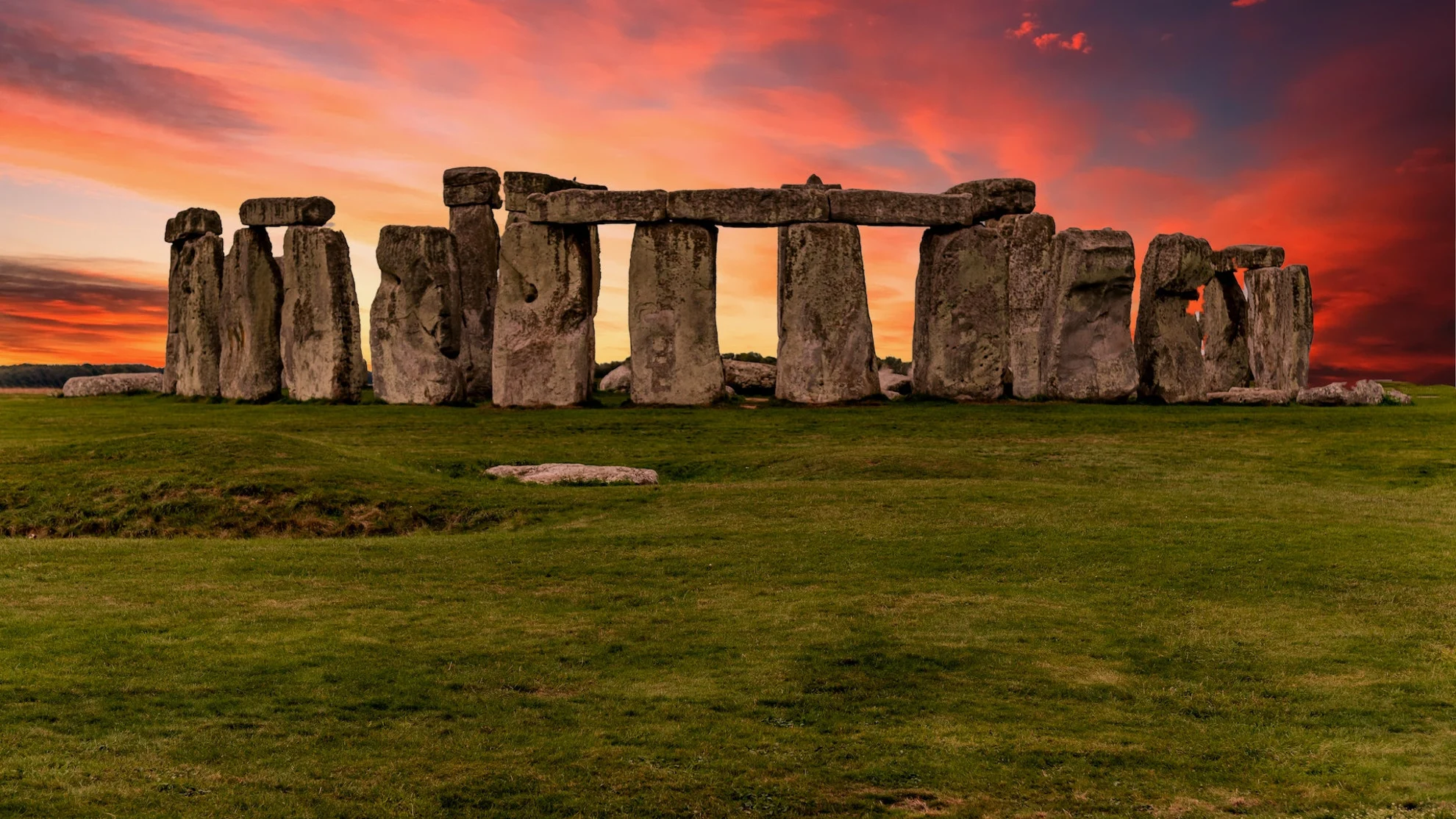
The science and celebration of the Summer Solstice
It's summer and we've just seen the longest day of 2023.
Wednesday, June 21, was Summer Solstice for 2023 - the official first day of summer in the northern hemisphere and the longest day of the year for this half of the planet.
Why is this day so special, though?
Opposite Day
It should be noted that, if you are in the southern hemisphere, June 21 is the winter solstice, the first day of winter, and the shortest day of the year.
This is due to the northern and southern hemispheres experiencing opposite seasons, no matter what time of year it is.
A Solar 'Pause'
The word 'solstice' comes from the Latin word solstitium, which is formed from two words, sol (Sun) and stitium (stoppage). It refers to how the Sun appears to stop or pause on this day — not in its passage from horizon to horizon, but in its day-to-day changes in position and angle in the sky.
Each successive day between the winter solstice and the summer solstice, the Sun appears to have climbed a little bit higher in the sky. On the day of the summer solstice, the Sun 'pauses' in its climb, as it reaches its highest point in the sky for the year (for whichever hemisphere is celebrating the first day of summer). After that, the Sun sinks a bit lower in the sky on each successive day until the winter solstice, at which point, it 'pauses' again before it once again begins climbing higher in the sky.
According to timeanddate.com, the official northern hemisphere summer 'pause' of the Sun for 2023 was on June 21, at 10:57 a.m. EDT.
Tracking the Sun
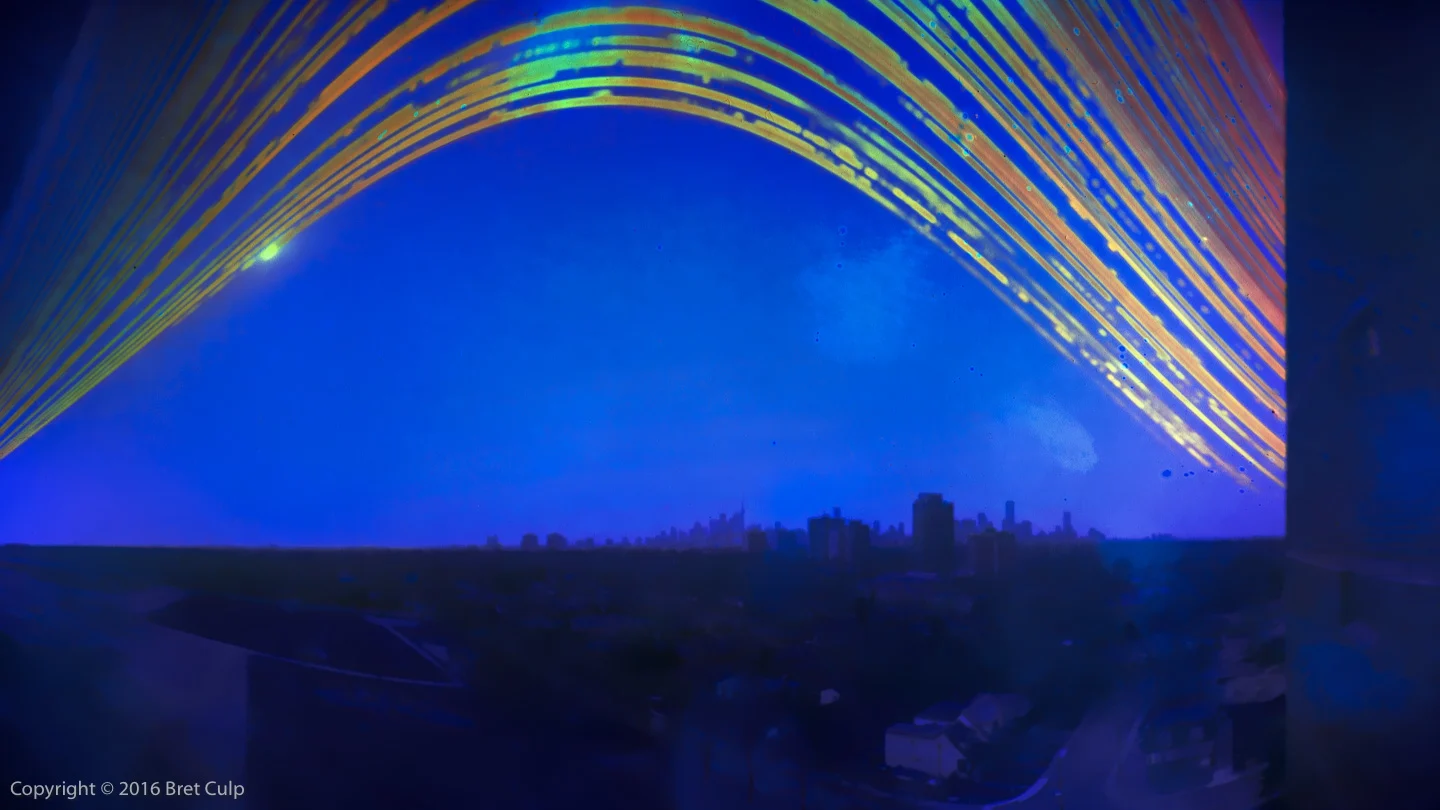
The Sun traces its way across the sky, higher and higher, between February 28 and June 20, 2016. Credit: Bret Culp - Used with permission.
The image above is an example of solargraphy.
In the winter of 2016, award-winning photographer Bret Culp placed a small pinhole camera, the inside of which was lined with a piece of photographic paper, in the window of his office with a view of downtown Toronto. He then left it there for nearly four months. As the Sun tracked from horizon to horizon, getting higher and higher in the sky each day, the pinhole projection of the Sun onto the film at the back of the camera traced the same path. Thus, with one image, he captured the motion of the Sun in the sky from the end of meteorological winter until the summer solstice.
Culp says that the breaks in any specific curve are caused by cloudy periods during that particular day.
"The colours are not direct depictions of the scene but a consequence of the paper's chemical reactions to extreme overexposure, the influence of uncontrollable factors such as moisture, dirt or fungus that may invade the camera, and excessive temperature fluctuations," Culp explains on his website. "Additionally, each brand of photography paper has a unique chemical makeup, resulting in different colour schemes."
What's behind this pattern?
Throughout human history, those people that tracked the motions of the Sun, the Moon, and other celestial objects, noticed that year-by-year, they would trace very specific, repeating paths.
Ancient monuments like Stonehenge, the temple of Karnak in Egypt, and Chichén Itzá in Mexico are just a few that were built to form specific alignments with this pattern in the sky. These locations still draw significant crowds as we transition between seasons — at the vernal and autumnal equinoxes, and the winter and summer solstices.
The best way to see the reason for this pattern is to look at how our planet orients with respect to the solar system and the Sun. You don't need to fly far out into space for this, fortunately. Just look at a globe.

Credit: princessdlaf/Getty Images
Globes are nearly always tilted to one side, and it is for more than aesthetic reasons. It reflects the 23.4° tilt of the Earth compared to the path the planet traces around the Sun (the 'ecliptic plane').
It's this tilt that is responsible for our seasons.
Earth doesn't "wobble" back and forth by 23.4 degrees throughout a year, though. The planet's tilt is relatively constant as we orbit the Sun, with the North Pole pointed towards the star Polaris. The exact angle of the tilt does vary by about one to one-and-a-half degrees every 41,000 years (known as 'changes in obliquity'). The direction the axis points also changes, on the order of every 26,000 years (known as 'precession'). So, in roughly 12,000 years, our north star will be Vega, and it will then swing back around to Polaris about 14,000 years after that.
However, the day-to-day changes in the Sun's position in the sky are solely the result of how our view of the Sun changes as we orbit around the star on this tilted Earth.
As Earth goes through one full orbit of the Sun (as seen in the video above), the planet's tilt causes the northern hemisphere to be pointed more towards the Sun during one half of the year. The southern hemisphere is pointed more towards the Sun for the other half of the year.
Take a location in Earth's northern hemisphere — Winnipeg, for example. During the summer, sunlight shines down on the ground there at a steep angle. So, each beam of sunlight delivers its energy and heat to a relatively small area. In the winter months, the Sun's rays strike Earth's surface there at a more shallow angle. With the same amount of energy spread out over a larger area, it means less overall heating of the ground. It's this difference in heat that makes the summer months hotter and the winter months colder.
The equinoxes — in March and September — mark the transitions between those two halves of the year, when the Sun is directly above the Earth's tilted equator. The solstices mark the points when the hemispheres reach their maximum angle — one towards the Sun and one away from the Sun — and the Earth's axis lines up precisely with the axis of the Sun.
Almost farthest from the Sun now
Contrary to what some may think, the Earth is not at its closest distance to the Sun during the June solstice. In fact, it is nearly at its farthest distance from the Sun at his time.
Earth's distance from the Sun changes throughout the year. As the planet travels around its orbit, it traces out an ellipse rather than a circle. Astronomers use 150 million kilometres (or more precisely 149,597,870,700 metres) as the average distance between the Earth and the Sun. This is known as 1 astronomical unit, or 1 AU. However, for roughly half of each year, our planet is closer to the Sun than 1 AU, and for the rest of the year, it's farther than 1 AU.
Right now, Earth is farther than 1 AU, and nearing its farthest point from the Sun, known as aphelion (ah-fee-lee-uhn).
In 2023, aphelion occurs on July 6 at 4:06 pm EDT. At that time, Earth will be 152,093,251 km from the Sun.
The point where Earth is closest to the Sun is called perihelion (peh-ruh-hee-lee-uhn). In 2023, it occurred on January 4, at 8:17 a.m. EST, when Earth was 147,098,925 km from the Sun. During the next perihelion, on January 2, 2024, at 7:38 p.m. EST, Earth will be slighlty farther than it was during perihelion 2023, at 147,100,632 km from the Sun.
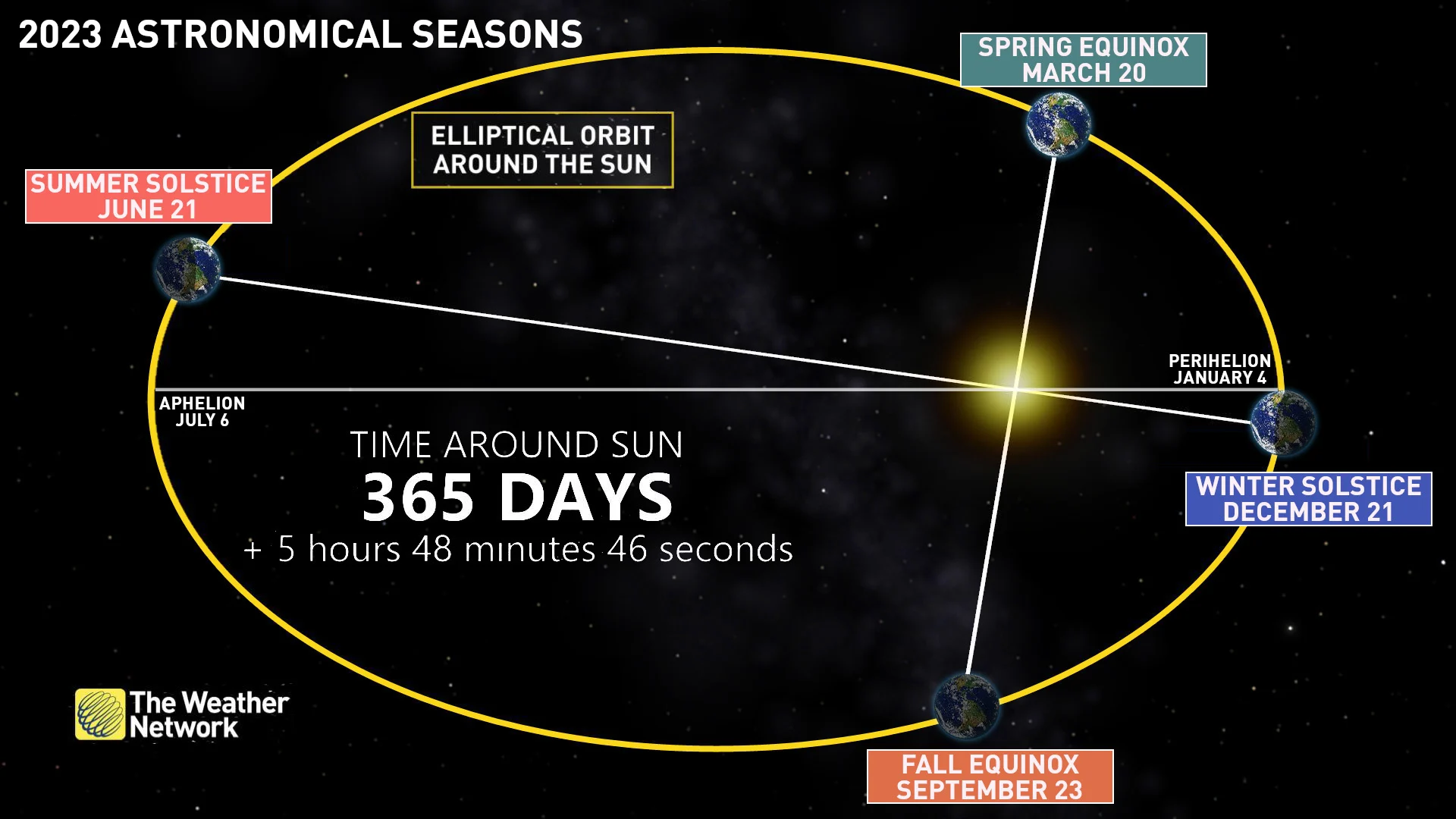
Earth's elliptical orbit and the planet's tilt, and how they combine to form our seasons. Earth's closest point to the Sun (perihelion) and farthest from the Sun (aphelion) are noted as well. Credit: NASA/Scott Sutherland
The scales of the above image are exaggerated, of course, to make everything easier to see. Earth would be smaller than one pixel if the diagram were scaled correctly to the size of the Sun. Also, the planet's orbital ellipse is exaggerated in the image. If it was drawn to match reality, at a glance it would appear circular, but when measured it would be just slightly elliptical.
With Earth's distance from the Sun changing, day-by-day, this results in a small difference in the amount of energy the planet receives from the Sun (known as 'solar insolation'). In fact, due to Earth being closest to the Sun during northern winter, and farthest from the Sun in northern summer, our seasons in the northern hemisphere are slightly nicer than they would be on a hypothetical Earth with a perfectly circular orbit. Our summers are ever-so-slightly cooler, and our winters are ever-so-slightly warmer.
The longest day of the year
June 21 is the longest 'day' of 2023 here in Canada — if, by 'day', you mean the exact hours of sunlight we see.
Just how many hours of daylight you get depends on exactly where you live, though. Plus, the farther north you go, the longer the day gets!
Watch below: The view from space reveals the 24 hours of daylight at the Arctic
With the 23.4° tilt of Earth, the 'top' of the world, with respect to the Sun, is at around 66 degrees latitude, better known as the Arctic Circle. Anyone north of that imaginary line on the planet, in summer, is facing nearly directly at the Sun at midday, and still has a direct line-of-sight to the Sun at midnight, with it hovering above the horizon.
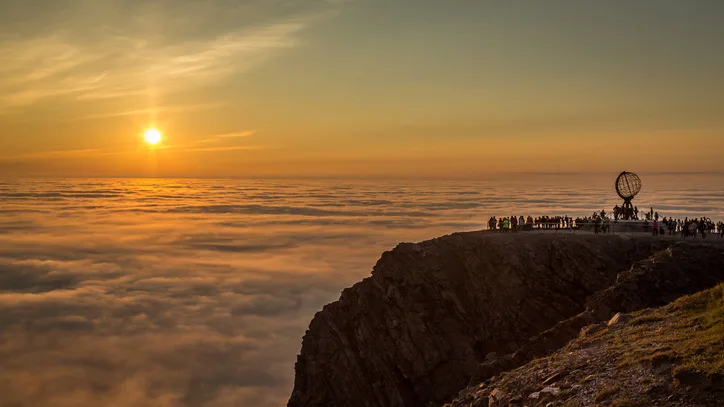
The Midnight Sun from Norway. Credit: Pedal Power Photos/Getty Images
In winter, it's the opposite. At midday, they would only see the barest hint of sunlight, with the Sun itself just beyond the horizon, while the rest of the day, they would be in darkness.
Want to check your exact location? Try TimeandDate.com.
Wandering solstice
Since Earth's rotation doesn't line up precisely with the length of the planet's orbit, the time and day of the solstices change each time we go around the Sun.
The June solstice wandered back and forth between June 21 and 22 from 1900-1955, but then it was only on June 21 from 1956 until 1987.
Since then, it has varied between June 20 and 21, and will continue to do so until 2075. At that time, this solstice will occur only on June 20 for at least a few decades.
After that, it will swing back towards June 22.
Day of celebrations
Every year on the summer solstice, thousands gather at Stonehenge, the ancient monument in Wiltshire, England, to watch the Sun rise.
Whether they're actual practitioners of Druidry or just there for the spectacle, attendees are treated to a sunrise that will line up exactly over the 'Heel Stone', as viewed from the centre of the monument.
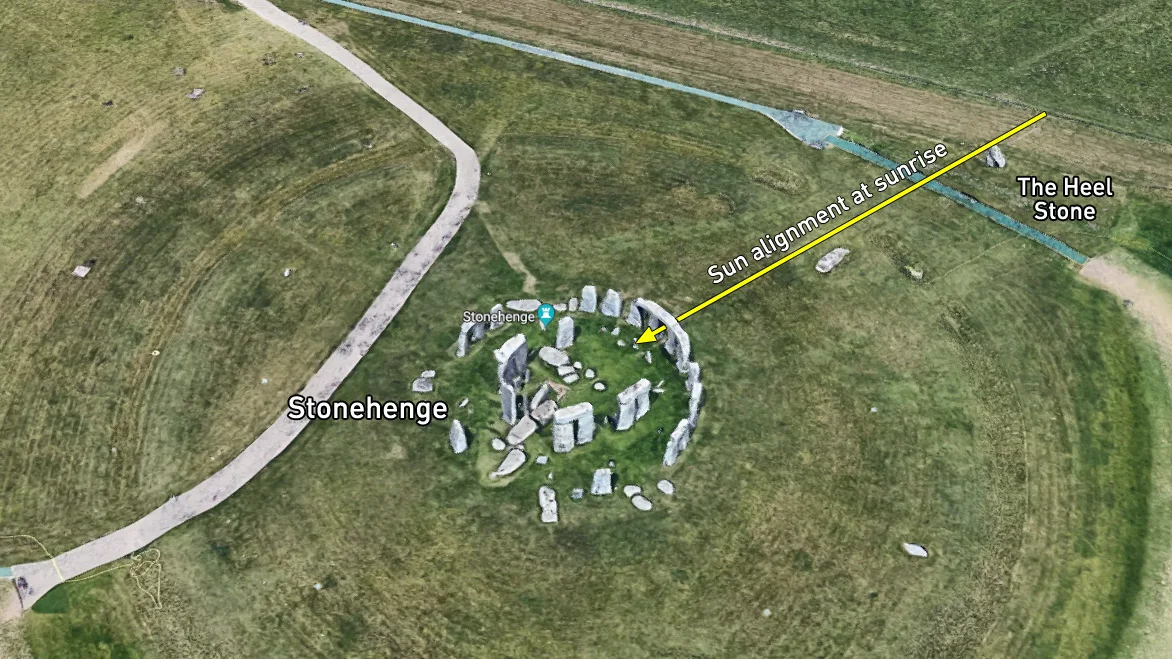
This image, screen-capped from Google Maps, shows the Stonehenge site, with an arrow indicating the alignment of the Sun on the morning of the June solstice. Credit: Google/Scott Sutherland
At 04:49 BST British Summer Time (BST) (11:49 a.m. EDT), the Sun aligned perfectly with the monument, marking the start of northern summer.
According to Frank Somers, from the Amesbury and Stonehenge Druids, celebrating the summer solstice at Stonehenge is about observing the cycles of nature.
"If you turn up at the changes between the seasons and observe that change," he told the International Business Times UK back in 2014, "you can become better attuned to those cycles in yourself, and you're a part of them."
In Sweden, the celebration of Midsummer, which occurs on June 24 this year, is one of the most important holidays of the year, on par with Christmas.
According to the website visitsweden.com: "The successful midsummer never-ending lunch party formula involves flowers in your hair, dancing around a pole, singing songs while drinking unsweetened, flavoured schnapps. And downing a whole load of pickled herring served with delightful new potatoes, chives and sour cream. All in all, a grand day out."
In Fairbanks, Alaska, residents usually mark the longest day of the year with the Midnight Sun Game.
While some baseball games are played as night games, the Midnight Sun Game has a whole different take on this concept. The first pitch of this game is thrown at 10 p.m., and the game typically lasts until 1 a.m. the next day. While that may seem like the same thing, the difference is, the Midnight Sun Game doesn't need a stadium with lights for the teams to play!
This year's game was the 118th Midnight Sun Game, with the Alaska Goldpanners squaring off against the Michigan Monarchs (the Goldpanners won, 5-1).
(Thumbnail image credit: John Nail/Pexels)










